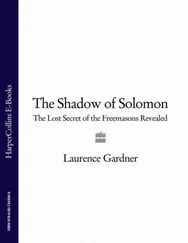534 USA North, defined as states touching or lying north of 45° N latitude. Alaska, Idaho, Maine, Michigan, Minnesota, Montana, New Hampshire, New York, North Dakota, South Dakota, Vermont, Washington, and Wisconsin all graze the 45th parallel and are contained within a NORC country as per the “North” definition in Chapter 1. Excluding New York State would lower the NORC totals to $5.944 trillion GDP, 31,837,087 km 2land area, and 235,059,000 people.
535 The so-called “resource curse” refers to empirical evidence that states with abundant resource wealth perform less well than resource-poor ones, but there is little consensus about why this is. See M. L. Ross, “The Political Economy of the Resource Curse,” World Politics 51 (1999): 297-322; C. N. Brunnschweiler, E. H. Bulte, “The Resource Curse Revisited and Revised: A Tale of Paradoxes and Red Herrings,” Journal of Environmental Economics and Management 55, no. 3 (2008): 248-264.
536 The bulk of the Arctic economy is based on commodity exports. Public services comprise 20%-40% GDP, transportation accounts for some 5%-12%, with tourism and retail significant only in particular areas. In 2001 the total Arctic economy was U.S. $230 billion (in purchasing power parity), with Arctic defined as all of Alaska (USA); Yukon, NWT, Nunavut, Nunavik, and Labrador (Canada); Greenland and the Faroe Islands (Denmark); Iceland; Nordland, Troms, Finnmark, and Svalbard (Norway); Västerbotten and Norrbotten (Sweden); Oulu and Lapland (Finland); and the republics of Karelia, Komi, and Sakha; the oblasts of Arkhangelsk, Murmansk, Tyumen, Kamchatka, and Magadan; the autonomous okrugs of Nenets, Khanty-Mansii, Yamal-Nenets, Krasnoyarsk Krai, Taimyr, Evenk, Koryak, and Chukchi (Russian Federation). “Public services” includes public administration, health care, and education. “Economic Systems,” pp. 59-84 of Arctic Human Development Report (Akureyri, Iceland: Stefansson Arctic Institute, 2004), 242 pp.
537 NTCL, founded in 1934 as Northern Waterways Limited, was purchased in 1985 by the Inuvialuit Development Corporation and Nunasi Corporation, making it a 100% private, aboriginal-owned company. For more, see www.ntcl.com/about-us/history-timeline.html.
Frontmatter maps by author.
Page 51. Musical lyrics from “Whoever You Are” by Tommy C. Jordan and Greg Kurstin © 1996 Nudo Music/Warner Bros. Records, Inc., reprinted by permission of Tommy C. Jordan and Hal Leonard Corporation (Whoever You Are, Words and Music by Greg Kurstin and Tommy Jordan, ©2004 EMI BLACKWOOD MUSIC, INC., TUCANO MUSIC, AND NUDO MUSIC, all Rights for TUCANO MUSIC Controlled and Administered by EMI BLACKWOOD MUSIC INC., All Rights Reserved, International Copyright Secured, Used by Permission).
Page 118: Maps by author using model data courtesy of Joseph Alcamo and Martina Flörke, Center for Environmental Systems Research, University of Kassel.
Page 126, 128: Climate model projections reprinted courtesy IPCC AR4 (see endnote 277 for full reference). Climate-change projection maps presented in Chapter Five were modified by permission of the IPCC, Climate Change 2007: The Physical Science Basis. Working Group I Contribution to the Fourth Assessment Report of the Intergovernmental Panel on Climate Change, Figure 10.8, Cambridge University Press. Please note that the modifications made to these maps (“optimistic,” “moderate,” “pessimistic”) are for the purposes of this book only, and are not suggested or used by the IPCC.
Pages 158-159: Maps by author using 2006 shipping data from AMSA, 2009 (see endnote 362).
Page 166: Map by author.
Page 212: Map by author.
Page 250: “Abandonment of the Jeannette” reprinted from Wonders of the Polar World, National Publishing Co.: Philadelphia, Chicago, St. Louis, 1885. “The Last Polar Bear” used by permission from Freezingpictures/Dreamstime.com/GetStock.com.
For photo insert (numbers refer to photograph sequence):
1. Photo used by permission from James Martell; 2, 3. Photos by author; 4. Photo used by permission from John Rasmussen, Narsaq Foto; 5. Photo used by permission from Dr. Ivan Frolov, Arctic and Antarctic Research Institute, Saint Petersburg; 6. Photo used by permission from ITAR-TASS News Agency, Russian Federation, 7-11. Photos by author; 12. Photo used by permission from Dr. Vladimir Romanovsky, University of Alaska—Fairbanks; 13. Photo by author; 14. Photo used by permission from Toronto Star /GetStock.com; 15. Photo used by permission from Dr. Richard Forster, University of Utah; 16. Photo used by permission from David Dodge, The Pembina Institute (www.oilsandswatch.org); 7. Photo used by permission from Benjamin Jones, Alaska Science Center, U.S. Geological Survey, Anchorage. Backmatter author photo used by permission from Karen Frey, Clark Univertiy.
This project came about thanks to the urging of two highly accomplished colleagues: Judith Carney and William A. V. Clark, of the UCLA Department of Geography. The conversation over a brief coffee with Clark, a hard-boiled statistician not known for mincing words, went like this:
Clark:
You need to apply for a Guggenheim and write a book.
Smith:
I’m a scientist. We don’t write books.
Clark:
Nonsense. I know plenty that do. You need to apply for a Guggenheim and write a book.
Four years later the book is done thanks to their advice, a fellowship from the John Simon Guggenheim Foundation, and the support of three other especially encouraging colleagues—John Agnew, Jared Diamond, and David Rigby, also UCLA geographers.
I thank my agent, Russell Weinberger of Brockman, Inc., for taking on a first-time book author with no experience writing for a lay audience. His patience in fielding my many questions was surpassed only by the patience of my editors Stephen Morrow (Dutton, New York) and Duncan Clark (Profile Books, London).
I am indebted to my amazing wife, Abbie Tingstad, who I met researching the book. Aside from her graciousness upon discovering her new husband would embed at his desk for nearly two years, she was the book’s foremost critic and sounding board. I thank my parents, Norman and Judith Smith, and brother, Daniel, for being so supportive of me throughout the project.
Maps and illustrations were drawn by the superb cartographer and artist Chase Langford. Vital research assistance was provided by UCLA students Vena Chu, Nora Hazzakzadeh, and Scott Stephenson.
The manuscript was substantially improved thanks to critical expert reviews of one or more chapters by John Agnew, Richard Alley, Doug Alsdorf, Lawson Brigham, Marshall Burke, Richard Glenn, John Grace, Richard Forster, Dennis Lettenmaier, David Perrin, and Gavin Schmidt. Scott Lefavour and Gary Levy provided helpful feedback on the final chapter. Norman Smith and Abbie Tingstad read and commented on the manuscript in its entirety.
Many people sacrificed time from their busy lives to grant interviews. These include Trevor Amiot, Daniel Augur, David Barber, Jeremy Beal, Kathryn Boivin, Cathie Bolstad, Jason Box, Ron Brower, Guylaine Charbonneau, Nellie Couroyea, Joanne Delaronde, Lloyd Dick, John Donihee, Ken Drinkwater, Kamyar Enshayan, Lyle Fetterly, Patrick Frank, Beth Freeman, Melissa Gibbons, Richard Glenn, Michael Goodyear, John Grace, Robert Grandjambe, Jackie Grebmeier, James Hansen, Udloriak Hanson, David Henry, Tony Hill, Harry Hillaker, Tom Hoefer, Stella Hoksbergen, Robert Huebert, Richard Janowicz, Anne Jensen, Lars-Emil Johansen, Brenda Jones, Eli Kavik, Aili Keskitalo, Andrei Kortunov, Jason Langis, Brian and Susan Lendrum, Diana Liverman, Kim Ma, Lise Marchand, John Marshall, Stephanie Martin, Dan McKenney, Jim McLaughlin, Jobie Meeko, Josee Michaud, Ellen Mosley-Thompson, Kevin Mulligan, Dona Novecosky, Adrian Orr, Pentti and Ritva Peltokangas, Tony Penikett, Dorothy Peteet, Laurie Renauer, Andrew Revkin, John Richardson, Ed Schultz, Glenn Sheehan, Elisapee Sheutiapik, Mary Simon, Duane Smith, Rodney Smith, Guy Smith, Mike Spence, Sara Tabbert, Greg Thessen, Lonnie Thompson, Daniela Tommasini, Wayne Tuck, Paningoak’ Vaengtoft, Sophie Vandenbergh, Alexei Varlamov, Aino Viker, Don Wallette, George Wandering Spirit, Sheila Watt-Cloutier, and Robert Zywotko.
Читать дальше












